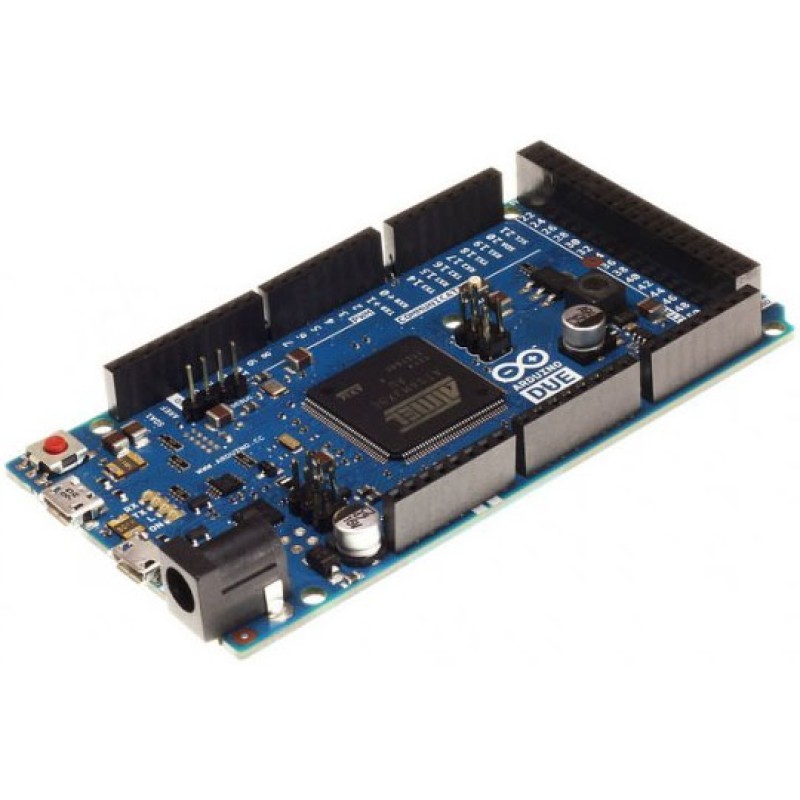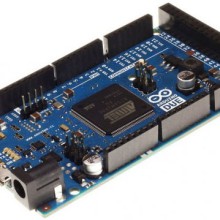Arduino DUE
The Arduino Due is the newcomer microcontroller board in the Arduino boards family.
It's the first board based on a 32 bit ARM core processor, the Atmel SAM3X8E ARM Cortex-M3 MCU,
that improve all the standard Arduino functionalities and add more new features.
It offer 54 digital input/output pins (of which 12 can be used as PWM outputs, with selectable resolution),
12 analog inputs with 12 bit of resolution, 4 UARTs (hardware serial ports), and two DAC outputs (digital to analog converter),
84 MHz crystal oscillator, two USB connections, a power jack, an ICSP header, a JTAG header, and a reset button.
The maximum voltage that the I/O pins can provide or tolerate is 3.3V.
Providing higher voltages, like 5V to an input pin could damage the board.
The Due has two usb connectors, the one with the micro-usb B connector is the native one
capable to act as an usb host, that means you can connect compatible external usb peripherals to the board,
such as mouse, keyboards, smartphones.
While the other ubs port with the type A connector is intended for debugging purposes.

מאפיינים
| Microcontroller | AT91SAM3X8E |
| Operating Voltage | 3.3V |
| Input Voltage (recommended) | 7-12V |
| Input Voltage (limits) | 6-20V |
| Digital I/O Pins | 54 (of which 12 provide PWM output) |
| Analog Input Pins | 12 |
| Analog Outputs Pins | 2 (DAC) |
| Total DC Output Current on all I/O lines | 130 mA |
| DC Current for 3.3V Pin | 800 mA |
| DC Current for 5V Pin | 800 mA |
| SRAM | 96 KB (64 + 32 KB) |
| Clock Speed | 84 MHz |
If you want to give a closer look to this board we advise you to visit the official Arduino Due page in the Hardware Section.
Warning:
Unlike other Arduino boards, the Arduino Due board runs at 3.3V.
The maximum voltage that the I/O pins can tolerate is 3.3V.
Providing higher voltages, like 5V to an I/O pin could damage the board.
The board contains everything needed to support the microcontroller; simply connect it to
a computer with a USB cable or power it with a AC-to-DC adapter or battery to get started.
The Due is compatible with all Arduino shields that work at 3.3V and are compliant with the 1.0 Arduino pinout.
The Due follows the 1.0 pinout:
TWI: SDA and SCL pins that are near to the AREF pin.
The IOREF pin which allows an attached shield with the proper configuration to adapt to the voltage provided by the board.
This enables shield compatibility with a 3.3V board like the Due and AVR-based boards which operate at 5V.
An unconnected pin, reserved for future use.


